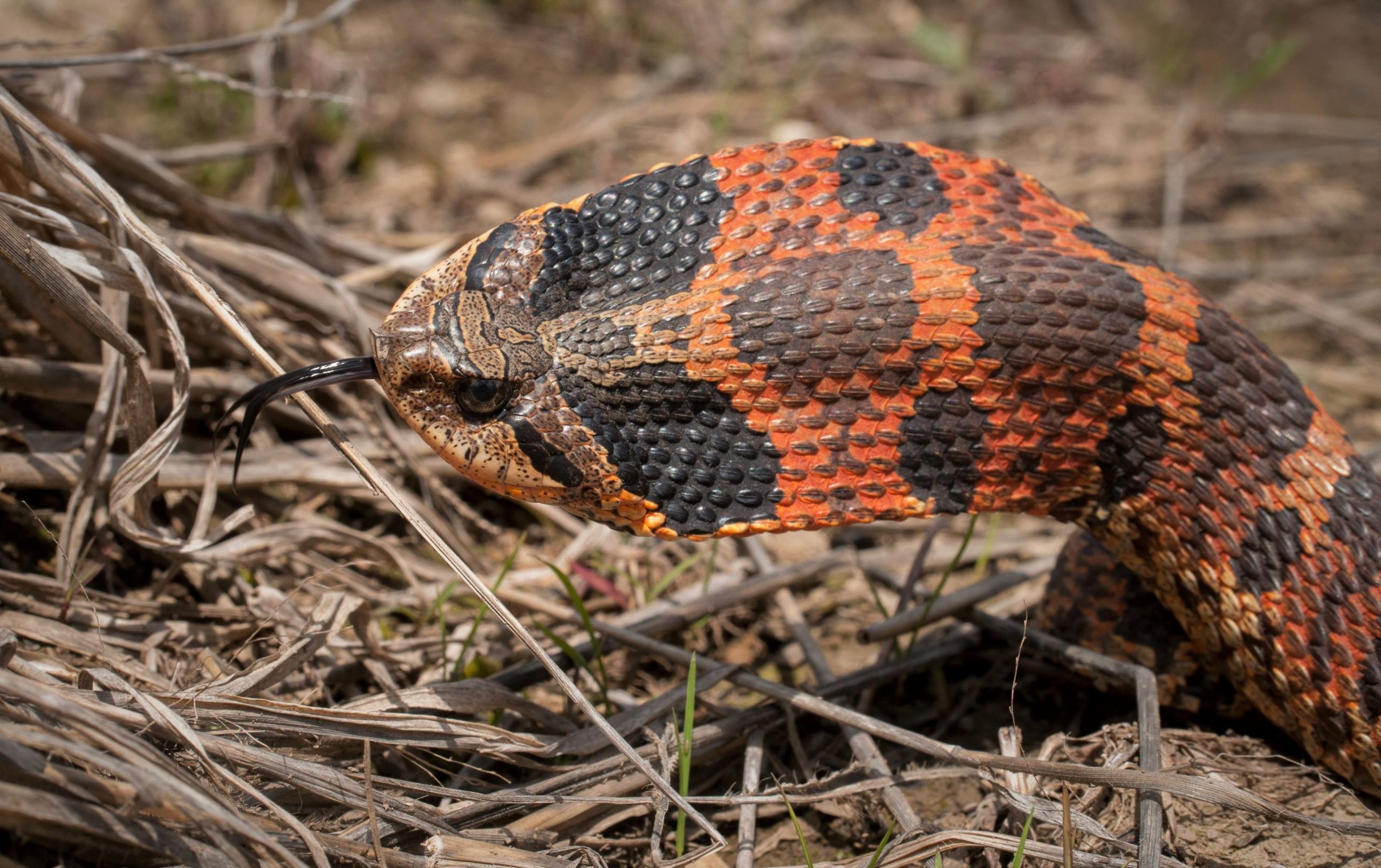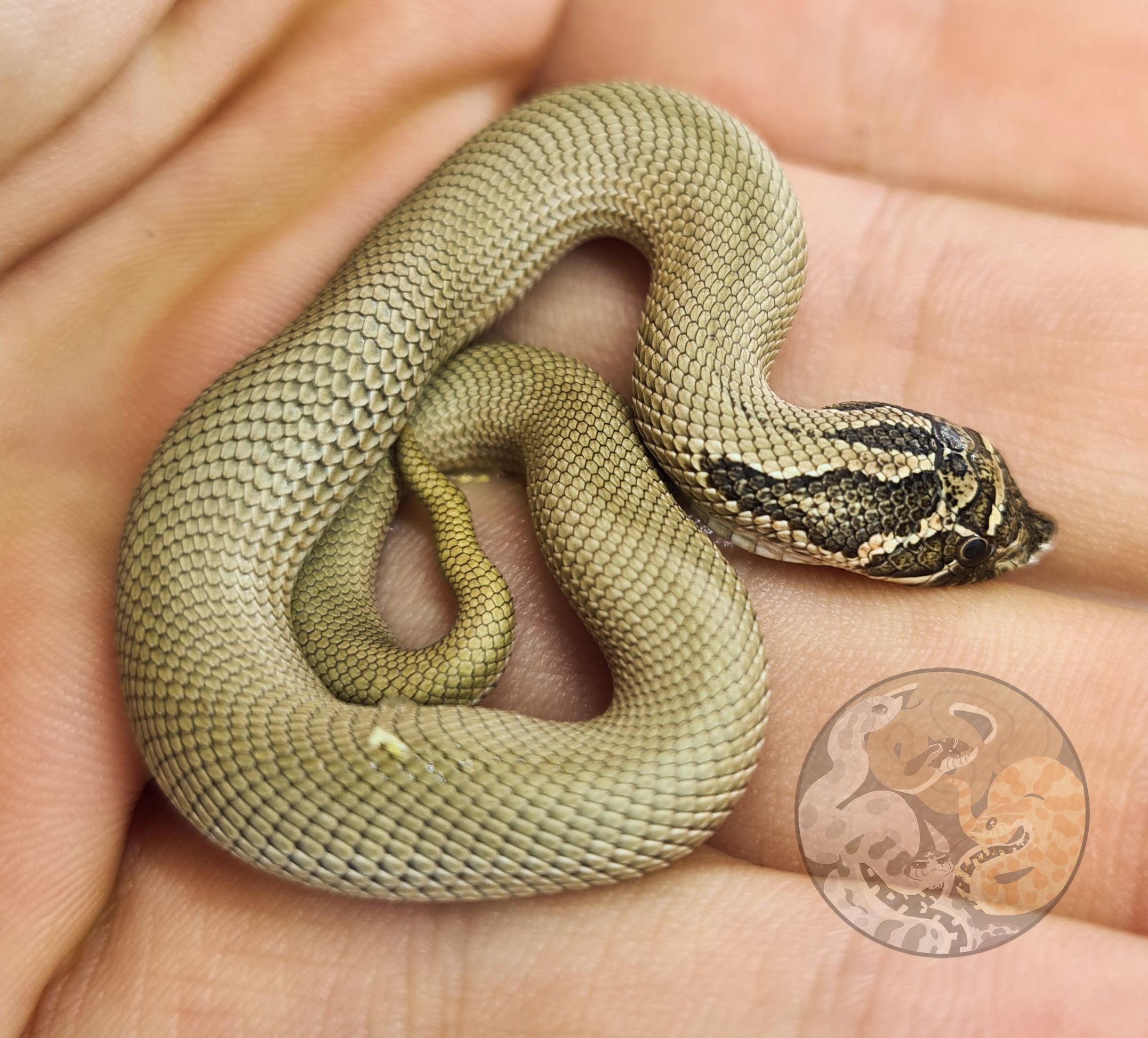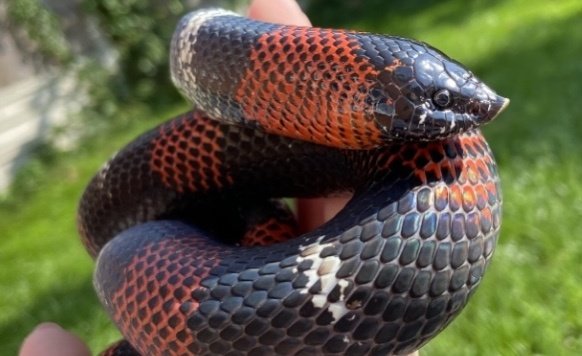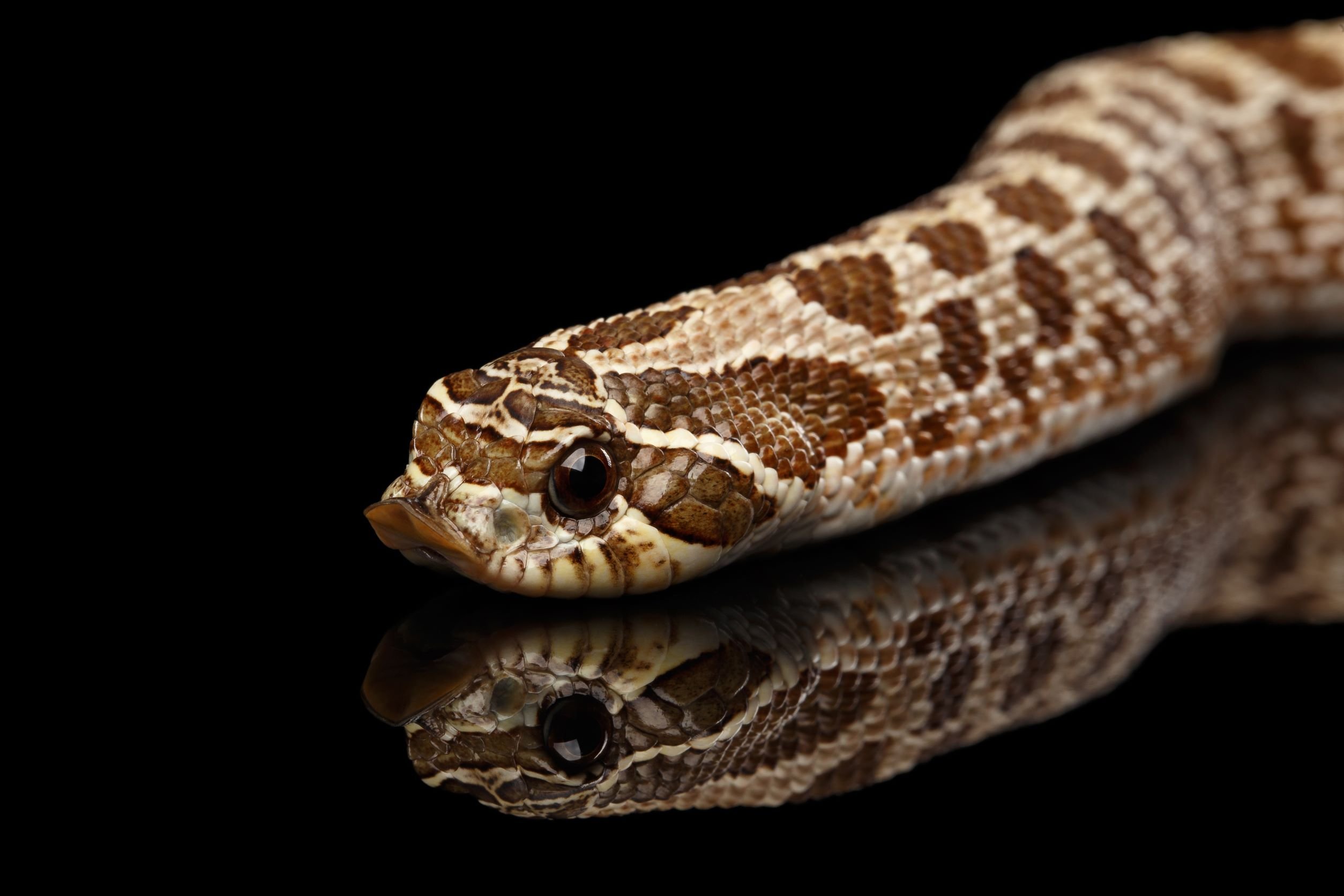Are Hognose Snakes nocturnal? Why does it matter one way or the other? Let’s find out more about their activity rhythm both in nature and captivity.
Last updated on February 1st, 2023 at 09:33 am
North American Hognose Snakes, including the Western Hognose Snake, are all diurnal – not nocturnal. This is also true of the South American Tricolor Hognose, a distant relative. They hunt during the day, and sleep at night. This activity pattern may help them surprise the nocturnal amphibians which make up the bulk of their diet.
In this article we’re going to look at not just the fact that hognose Snakes are diurnal, but also ask why are they diurnal? How do they benefit from this, even though the risk of predation is higher during the day? We’ll do this by looking at what they eat, and why it doesn’t matter how big they are or if they’re venomous or not.

What do Hognose Snakes eat?
In captivity, Hognose snakes do well on a diet of frozen-thawed mice. You must source these from a reputable supplier that you can trust. If you don’t provide your Hognose with UV light, then feeding healthy rodents is particularly important! They do fine without UV and supplements, but only if the mice were fed a good diet.
Often, an adult Western Hognose snake (Heterodon nasicus), for example, will be happy and healthy when given one large adult mouse every 7 days.
In the wild, Hognose Snakes of all species are specialist toad predators. They use their upturned snout to dig out buried toads after tracking them down with their keen sense of smell.
Being diurnal actually gives Hognoses a huge advantage when it comes to hunting toads. This is because toads are almost exclusively nocturnal. It makes sense to hunt and attack them during the day when they’re often in a state of torpor (heavy sleep).
Obviously, as a predator it pays to be versatile and eat a range of prey, especially if your favourite prey item varies in abundance. This is exactly what Hognose Snakes do, even though toads are their staple.
From the analysis of recent surveys, scientists have found that the Western Hognose Snake does in fact include a variety of other prey items in its diet.
Western Hognose Snake diet in the wild:
- Toads
- Lizards
- Lizard eggs
- Snake eggs
- Frogs
- Small rodents
- Birds (very rarely)
- Turtle eggs
In one study, Western Hognoses (also commonly known as Plains Hognoses), showed a strong preference for turtle eggs at certain times of year. You can read more about this here.
Again, if looking for eggs, being diurnal could quite possibly be an advantage. Heat helps to dissipate and spread odours, so it may be easier for the snakes to find buried eggs during the warmer daylight hours.

What do baby Hognose Snakes eat?
Baby Hognose Snakes eat similar prey to adults in the wild from small lizards and their eggs very young toads . Occasionally, they may also include insects, though this would not be their preference.
In captivity, this preference for reptile and amphibian prey often causes issues. Baby Hognoses of any species may refuse to eat rodents at first.
One tactic that is proven to help get them onto a rodent diet is scenting with frogs’ legs. Some breeders now buy frozen frogs’ legs, then defrost a frozen pinkie mouse in the same bag. (You can read more about feeding babies in the (Tricolor Hognose Snake Husbandry Guide).
Are Hognose Snakes venomous?
Hognose Snakes are indeed venomous – but let’s not get carried away. Their venom is not particularly toxic, and really not any use when it comes to defence. This is because along with its low toxicity, Hognose Snake venom is introduced through a poor delivery system. It also seems to be rather slow acting.
All of the Hognose species we discuss here are rear-fanged snakes, also known as Opisthoglyphous. This means that they have some enlarged teeth attached to the maxillae bones at the back of their mouths.
These teeth have grooves running down them, along which venom runs when the snake bites and chews a prey item. A system like that just doesn’t compare to the hollow fangs of Rattlesnakes, for example, which are at the front of the mouth and literally inject their venom – which also happens to be very potent.
In fact, there are only a handful of truly dangerous rear-fanged snakes in the world, such as the Boomslang. Where these species differ from Hognoses is that they have developed larger, more forward-positioned fangs and much more potent venom, despite technically remaining ‘rear-fanged.’
A Rattlesnake bite gives a would-be predator burning pain in seconds, whereas a Hognose Snake bite would give some numbness and itching after an hour or so – not exactly a good deterrent.
Hognose Snakes don’t rely on venom for defence…
So, Hognose venom isn’t great for defence, although it is certainly enough to take down even the mightiest of toads. Instead, these snakes use bluff, and some serious acting skills to save themselves from predators.
Tricolor Hognose Snakes rely on their bright colours instead of acting. These mimic the highly venomous Coral Snakes that share their range.

Do Hognose Snakes bite?
Another problem with Hognose Snake venom as a defence mechanism is that they are reluctant to use it. In general, these snakes simply do not bite. They bluff, they strike, but almost never bite. Why this is the case is uncertain.
It may be because they are so heavily invested in their threat display or may just be that they instinctively don’t want to waste precious venom. After all, venom is a complex cocktail of proteins, and uses considerable energy (in terms of food intake) to make.
How big do Hognose Snakes get?
As with their venom, it isn’t the size of Hognose Snakes that keeps them safe from predators and allows them to be diurnal. It is all down to their threat display and death-feigning routine, or colouration in the case of the Tricolor Hognose.
Even if Hoggies are chunky, they aren’t chunky enough to win any kind of physical contest with mammalian predators like Skunks or Coyotes.
In fact, it’s very uncommon to find a Hognose Snake of any species over thirty inches in length, and many of them only reach about 24 inches (60cm). Because they do spend a lot of time burrowing, particularly to find their food, they are limited in size.
The bigger an elongate animal is, the more force it needs to burrow. This is why almost all of the specialist burrowing squamates (snakes, lizards and amphisbaenians) are under 24 inches (60cm) in length, worldwide.
Check out the table below to find out how big most Hognose Species get:
| Eastern Hognose (Heterodon platyrhinos) | 24 – 36 inches (60 – 90cm) |
| Western Hognose Snake (Heterodon nasicus) (A.K.A. Plains Hognose) | 16 – 24 inches (40 – 60cm). Some females up to 35 inches (89cm) |
| Dusty Hognose Snake (Heterodon gloydi) | 15 -25 inches (38 – 63.5cm) |
| Mexican Hognose Snake (Heterodon kennerlyi) | 15 -25 inches (38 – 63.5cm) |
| Southern Hognose (Heterodon simus) | 14 – 20 inches (36 -51cm) |
| Tricolor Hognose Snake (Xenodon pulcher) | roughly 24 inches (60cm) |

The bottom line
Hognose Snakes are not nocturnal. All of the North American species and the South American Tricolor Hognose are diurnal snakes that hunt during daylight hours.
Why they are diurnal is directly related to the hunting aspect. These snakes all have a liking for toads, which are nocturnal. Hunting toads during the day when they’re sleepy makes things much easier for the snakes.
Though surprising, Hognose Snakes don’t rely on venom or size to stay safe during the day. The North American Hognoses rely on their superb threat displays and death-feigning, while the Tricolor Hognose relies on its bright colouration that mimics Coral Snakes.

